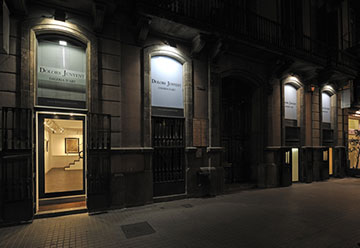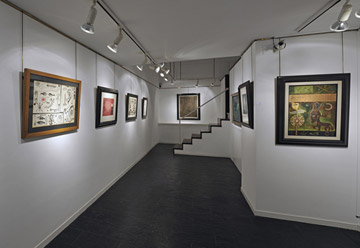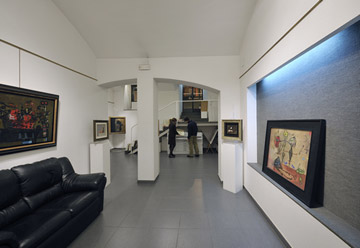- Amat, Frederic
- Amat, Gabriel
- Arranz Bravo
- Arroyo
- Barbara
- Barcelo
- Bartolozzi
- Bea
- Becquer
- Benet
- Bird
- Bores
- Brinkmann
- Brossa
- Cardenas
- Carral
- Casas
- Castillo
- Chancho
- Cisquella
- Clave
- Corbero
- Corneille
- Croft
- Cuixart
- Domingo
- Fabres
- Farreras
- Feito
- Fenosa
- Forteza
- Genovart
- Gimeno
- Gonzalez
- Gonzalo
- Graner
- Granyer
- Grau
- Grau Sala
- Gudiol
- Guinovart
- Hernandez Mompo
- Hernandez Pijuan
- Jorn, Asger
- Junyent, Oleguer
- Lam
- Llena
- Lloveras
- Lopez Ramon
- Marin
- Marsans
- Marsillach
- Marti Alsina
- Matilla
- Meifren
- Menchu Gal
- Meseguer
- Mir
- Mira
- Miro
- Moore
- Moragas
- Munoz
- Noland
- Olive
- Palazuelo
- Palencia
- Pazos
- Perejaume
- Perez Villalta
- Picasso
- Plantalech
- Plasencia
- Plensa
- Ponç
- Puig
- Rafols Casamada
- Ramis
- Rasero
- Rebull
- Riera i Arago
- Rivera
- Roca Sastre
- Roig
- Roig Soler
- Rossell
- Rueda
- Saura
- Serra
- Sicilia
- Solano
- Subirachs
- Sunyer
- Tamayo
- Tapies
- Tharrats
- Togores
- Torres Garcia
- Ubeda
- Ucles
- Valdes
- Valls
- Vedova
- Viladecans
- Vilagrasa
- Villa
- Zao Wou-ki
Artists +
Hours
Lam
Wifredo Lam, a Cuban avant-garde painter, is one of the most recognized artists internationally. This painting, with great personality and its own symbolism, is present in the main museums of the world.
BIOGRAPHY OF WIFREDO LAM (available in Spanish):
Wifredo Lam born in Sagua la Grande, Cuba, 1902 and died in Paris, 1982.
Painter and graphic artist, he is the most universal of Cuban painters and the greatest exponent of Avant-garde in Cuba, as well as one of the most recognized Latin American painters.
He studies painting at the San Alejandro Academy in Havana. In 1923 he moved to Madrid, where he discovered the painting of Bruegel and Hieronymus Bosch. In 1938 Lam went to Paris and established a great friendship with Picasso, who introduced him to the Parisian artistic environment. He also works in his studio, which leaves a strong mark on his work. In the French capital he joined the surrealism group led by Breton. This relationship strengthens Lam’s interest in black art and African divinities, which for him are synonymous with authenticity.
After a stay in Marseille with the surrealists, he traveled to Martinique with Breton and arrived in Havana in 1942. There Lam painted some of his most important works, intensely inspired by African and Oceanic sculpture, such as The Jungle (1942-1943). At this time the surface of his paintings is filled with female figures with the heads of stars, biomorphic forms, legs that merge with suffocating vegetation. In 1964 he moved to live in Italy in Albisola Mare, near Genova, and since 1974 he has combined his residence in Italy with Paris.
Lam’s work is found in the following museums and collections: - Guggenheim Museum - Museum of Modern Art, New York - Fine Arts Museums of San Francisco - Santa Barbara Museum of Art, California - Tate Gallery, London, England.





